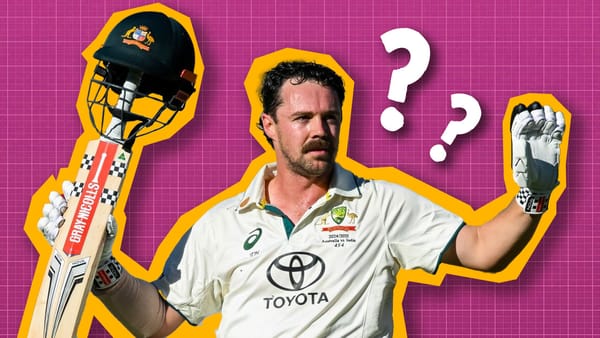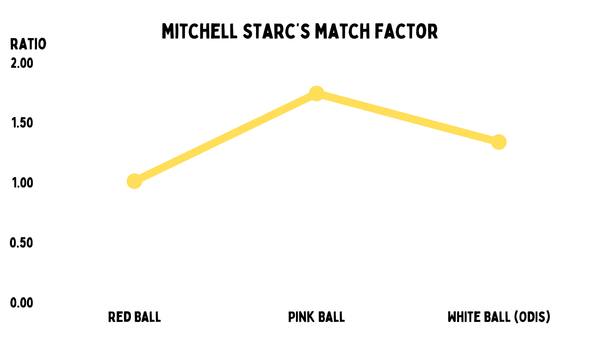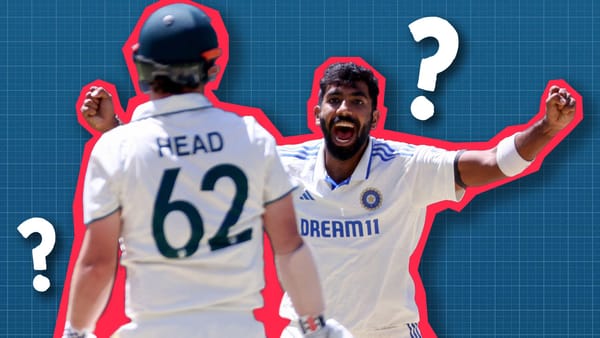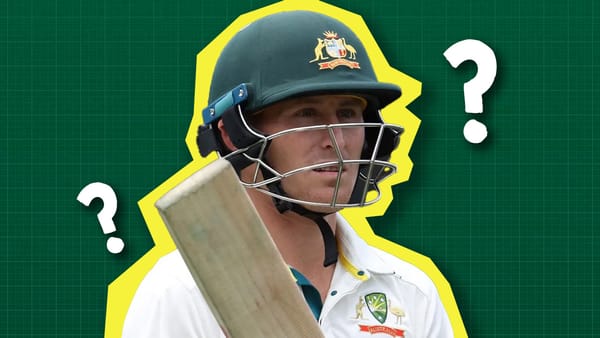IPL 2025: The batting big board
Analysing the true stats of all batters in the auction with at least 300 runs in the last three IPL seasons

Welcome to the IPL 2025 batting big board. We look at the best batters in each phase, while factoring in their form, age, and secondary skill. In a mega auction, you are not just building a team for one year. This also includes some players who have not played a lot in the competition.

Ishan Kishan is 26, so he should be peaking in the next couple of years. His record in the Powerplay in the previous cycle was good, but not outstanding. However, with him you’re getting an Indian left-handed wicketkeeper at the top. He ticks a lot of boxes. Even if he underperforms, you get flexibility with him.

Phil Salt’s consistently brisk starts with Sunil Narine were a huge reason why KKR won the 2024 IPL. Again, he is a wicketkeeper. The 28-year-old English batter has averaged around 30 while striking at over 160 in T20s in the last two calendar years. His strike rate in the Powerplay in the IPL was 28 more than expected.
After an outstanding season in 2022, Jos Buttler has been slightly underwhelming in the last couple of seasons. There were two match-winning hundreds last season, but except that he did not have a huge impact. He is 34 and had a calf injury that kept him out for four months. But he is still a quality player, and you know he can perform very well in the IPL. Plus, he gives you a wicketkeeping option.
I have ranked Jake Fraser-McGurk slightly lower on this list because he is still a player in development. He tends to struggle against quality bowlers at times, and has been out of form in the format after the IPL. But the upside with him on batting wickets—which is what we saw in the last edition of the IPL—is huge.
Devon Conway played a big part in CSK’s title win in 2023. The 33-year-old left-hander is a dependable anchor—he had a true average of nearly 25 in the Powerplay, albeit at a true strike rate of -5. Rachin Ravindra started the season well with a couple of high-intent knocks, but ended up averaging just above 22. Will Jacks scored a whirlwind hundred against GT. With them, you also get a bowling option in your team. Faf du Plessis is 40, but is playing the best T20 cricket of his life. He recently led the St. Lucia Kings to a CPL title.
KL Rahul would have been ranked much higher on this list if it was his 2018 version. He doesn't have the same impact as someone like Devon Conway, who plays a similar role. He is 32, Indian, and can keep wickets. But this is just a list of powerplay batters, where he has been slow-scoring. On the other hand, you have Prithvi Shaw, who shows intent but does not stay in the middle for long. But we are talking about two extremely talented players here. If they could have a clear role in a franchise, we could see better returns.
Quinton de Kock had a true strike rate of 14, but a true average of -3.55 in the Powerplay in the last three IPL seasons. However, he had a great run in the 2024 CPL—averaging 45 at a strike rate of 162. Jonny Bairstow has not been in great T20 form in the last couple of years. But they still add flexibility to line-ups, because they can keep wickets.
Kyle Mayers scored 379 runs at an average of 29 and a strike rate of 144 for LSG in 2023, but did not get a game in the following season. He has scored at over 1.5 runs a ball this year, and has done well in the Powerplay. Ben Duckett is yet to play in the IPL, but he is also a quick starter in the T20 format. Rahmanullah Gurbaz, who replaced Salt for KKR in the playoffs, is another fast-scoring batter in the first six overs. But he also showed that he can anchor the innings if required—top-scoring in the T20 World Cup in June.

You don’t often see an Indian player of Rishabh Pant’s quality in the mega auction. The wicketkeeper can bat at number three or four, depending upon the team composition. In the previous cycle, he scored 581 runs from overs 7 to 16 at a true average and strike rate of 7 and 4. That’s slightly above par, but you do expect far better returns from him.

Shreyas Iyer was KKR’s captain when they won the title in 2024. He had a decent season with the bat, but the more important thing was that he was willing to float around the batting order for his team. As the skipper, he could have easily taken a fixed role. Plus, we have seen his ability against spin. A lot of teams would like a player like that in their setup.
Glenn Maxwell’s run for RCB from 2021 to 2023 was absolutely incredible. But he couldn’t get going in the 2024 edition. And that’s what you get from a high-variance batter like him. He could just not turn up, or absolutely carry your team through the middle overs. I think role clarity is very important for him.
In recent IPL seasons, Buttler tends to start a bit slow in the Powerplay, but when he gets to the middle, he is very impactful. Similarly, Conway also scores quicker through to the 7 to 16 overs phase—a true strike rate of over 30.
With Stoinis and Livingstone, you also get some value addition with the ball. The Australian allrounder had a true strike rate of 13, while Livingstone striked at 22 quicker than expected. I would have had Harry Brook higher, but he has only played one IPL season where he did not do well. In terms of his talent, there aren’t many reasons why he should struggle in a high-scoring tournament. He can still get better against spin, but he is a player with a high ceiling.
Another slightly underrated player who thrives in the middle overs is Rahul Tripathi, who has true values of 16 on both the metrics. A bit like Conway and Buttler, KL Rahul starts to score faster in the middle overs while also averaging high. We also have Nitish Rana on this list, who has a negative true average but a true strike rate of 10. His teammate at KKR, Venkatesh Iyer started as an opener but performed very well at number three and other middle order batting positions last season. Mahipal Lomror has also shown promise—particularly against spin— in the limited opportunities he has had in the league.
We end the middle overs with three South Africans that have loads of experience in the IPL. Faf du Plessis was the second-highest run-getter in IPL 2023, so we know that he can capitalize on big starts. He prefers pace to spin, but he is an opener who would keep going after the first six overs on most days. Similarly, Quinton de Kock also had a good record—a true average of 7 and true strike rate of 10. David Miller is a finisher, but the time he spends in the middle overs helps him get going towards the end. But of course, there is always a risk in that approach.

Livingstone had a true strike rate of 44, while averaging almost 12 runs more than expected in the final four overs. Maxwell scores 0.6 runs a ball above par in this phase, with a true average close to neutral. His Australian teammate Stoinis also does well towards the end of games. Tim David is a specialist late-order batter who hits pace, but struggles against spin. He also does not bowl much, and is not always a plus in the field. In the right team that has a slot for him, he would be a good choice.

Miller’s T20 batting template is a bit like Rinku Singh or MS Dhoni—they are what we call finishing anchors. They take some time, but then once they are set they finish games really well. He has a high true average, and is slightly above par on true strike rate. He is also better at chasing than at setting a target.
Next, we have Pant and Buttler in a similar tier of sorts, because neither of them are pure finishers. But if they are set, we see them navigate through these situations quite well. They have the firepower as well as the smarts to close games at the end.
The 26-year-old Ashutosh Sharma was one of the finds of the last IPL—scoring 189 runs at a strike rate of 167. But Punjab Kings retained Shashank Singh, the other uncapped finisher who had a great run. Abdul Samad’s talent was evident in his first IPL season in 2020, when he took on Jasprit Bumrah (18 runs off 6 balls) and Anrich Nortje (26 off 8). In the last three seasons, he has a true strike rate of 19. Jitesh Sharma had two good seasons in 2022 and 2023, but he didn't do well in 2024.
Sikandar Raza ran a three off the last ball to finish a game in IPL 2023. However, he only played nine games in the last cycle. Rovman Powell is also best suited as a finisher. But Raza is a better player of spin, and a far superior bowler.
A couple of interesting outliers on this chart are Krunal Pandya and Shreyas Iyer. Krunal doesn’t get out, but also scores a lot slower than the mean. Shreyas has a true strike rate of nearly 40 but it is only over a small sample size of 94 runs, and he has also gotten out more often than expected.

We have looked at the three phases, and the batters who are best suited to fill those roles. But there are other aspects as well—how quick a batter starts, and how they go against various bowling types. We look at true strike rates in the first 10 balls and explore the records versus pace and spin in depth.
Jake Fraser-McGurk is comfortably the quickest starter of all batters on this list, scoring at nearly a run per ball more than par in his first 10 balls. Salt, Rossouw and Maxwell also get going quickly, while Jitesh Sharma and Abdul Samad have the best numbers among Indian batters. KL Rahul is at the other end of this graph, and that really sums up the criticism of his T20 game. If he can fix this issue to begin with by batting freely without the fear of failure, his impact would definitely increase.

Fraser-McGurk has the highest true strike rate, with Livingstone not too far behind. What makes it even more fascinating is that their true averages are also among the best. Salt’s numbers are also quite incredible. But Miller has a true average of 16, which is the highest of all batters on this chart. Conway and Tim David are also around that mark, with their true strike rates being 7 and 25 respectively. Faf, Buttler and de Kock also have great numbers over a significant sample size. Maxwell and Bairstow are slightly under par in terms of average, but their true strike rates are close to 20. Marsh is even better, scoring at a strike rate of 26 more than expected.

Remember, we don't get to see many deliveries above 140 kmph. Faf has faced 97 deliveries above 140 kmph in the last three seasons, and gotten out to it just once while striking at 185. De Kock also has just one dismissal in 56 balls, with a strike rate of 196. Salt scored at over two runs a ball after facing 41 such deliveries. Stoinis and Miller also have good records against high pace.

Shaw scores quicker against spin bowling than anyone else, but also gets out more often than them. KL Rahul is the other outlier, with a true average of nearly 50. However, he doesn’t score a lot quicker than par. Conway, Tripathi, Warner and Miller also perform well, but Jos Buttler has the best stats against spinners.

Buttler was superb against the balls spinning into him, with the second-best strike rate after Maxwell. But Maxwell’s average was less than 15 when facing such deliveries. Markram also has a high average at a good scoring rate, while Warner, Venkatesh Iyer, Conway, and Kishan also do well.

Mahipal Lomror is the standout batter here against the deliveries that turn away. Tripathi and Buttler strike in the 140s while averaging above 50 against such balls. Conway scores a bit quicker against them, and he has the second-best average after Rahul—who has a strike rate of under 120. Maxwell (again) and Mayers have high strike rates, but they also get out more often.

From the limited sample size, McGurk smashes both in and away spin. Gurbaz is great against the balls spinning in, but slow against the ones that go away. Lomror prefers away spin, and is not as quick against the balls turning in.

Teams will want players of varying skillsets based on who they already have and their home conditions. But we have tried to rank these players as fairly as possible.





